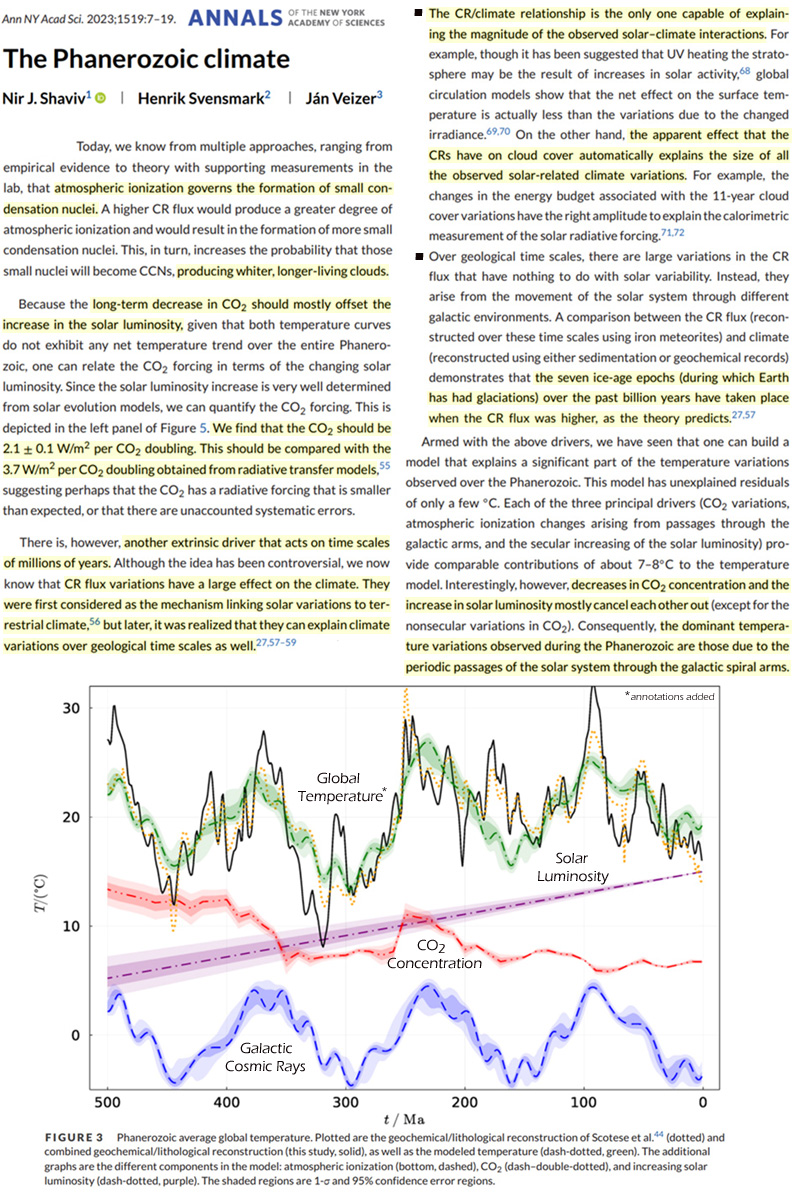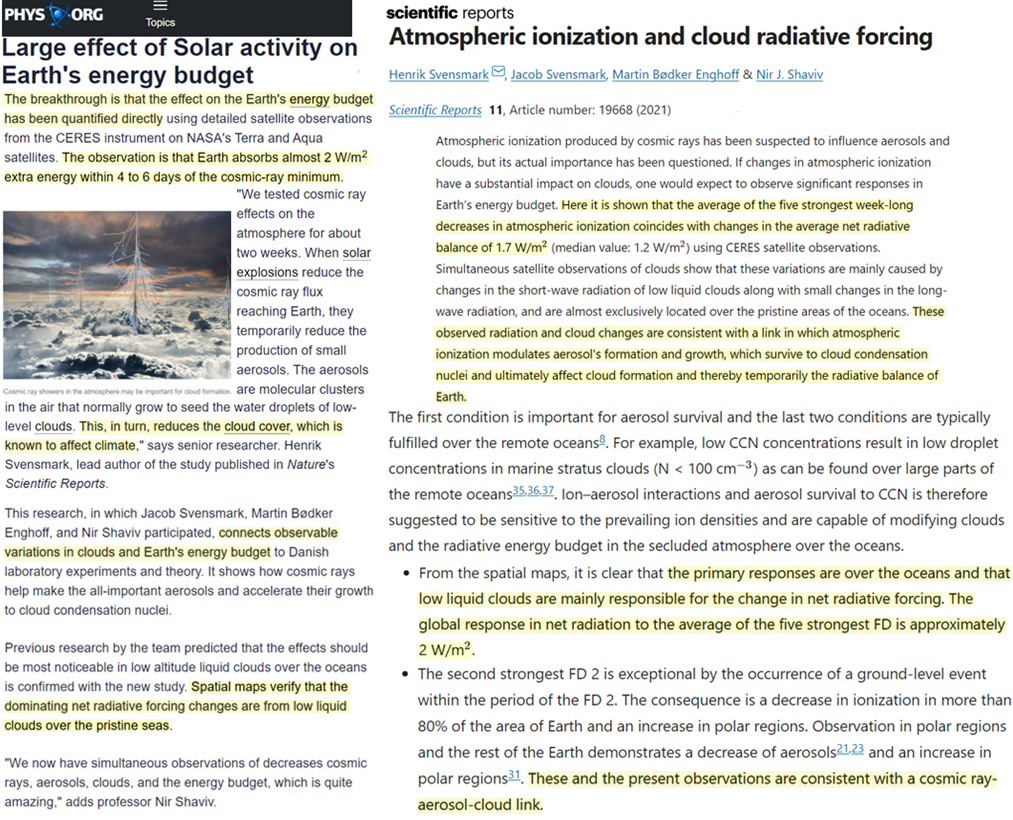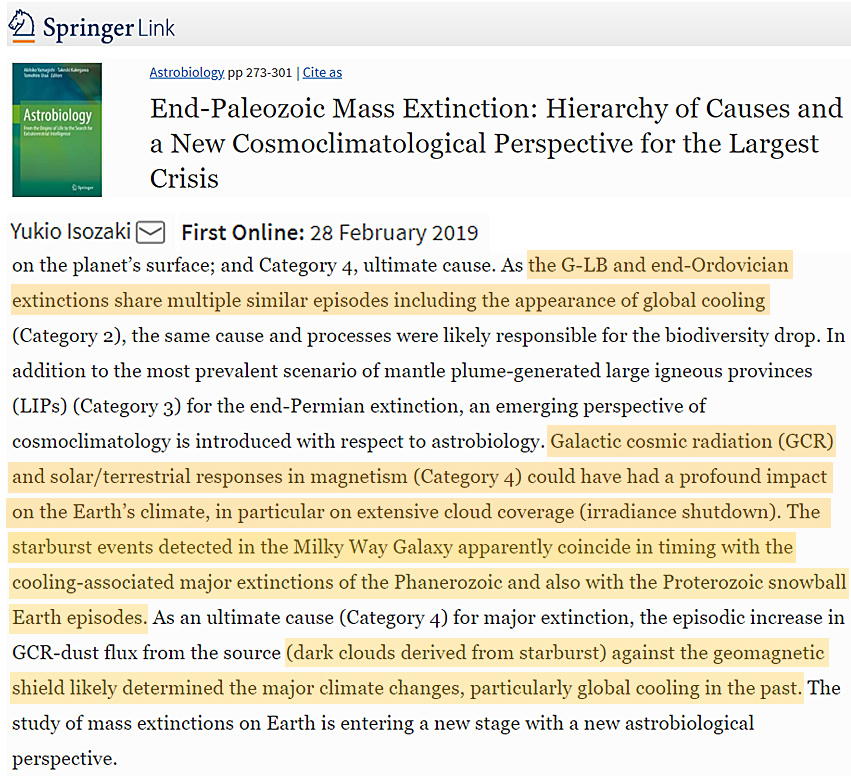Per a new study, million-year variations in cosmic rays (CR) modulating cloud cover, which, in turn, drives variations in incident solar radiation on short- and long-term timescales, is the dominant cause of million-year climate variations, explaining all 7 Ice Age epochs over the Phanerozoic.
In contrast, declining CO2 and rising solar luminosity over the last billion years cannot explain past climate variations, as they “cancel each other out.”
CO2’s effects on climate are, using paleoclimate estimations of solar luminosity, assessed to be nearly just half of what the climate models say they are (2.1 W/m² for CO2 doubling [~0.7°C] rather than 3.7 W/m² [1.2°C] per doubling).
Assessing only millions-of-years timescales, the authors (Shaviv et al., 2023) suggest:
“The CR/climate relationship is the only one capable of explaining the magnitude of the observed solar-climate interactions.”
“The apparent effect that the CRs have on cloud cover automatically explains the size of all the observed solar-related climate variations.”
“The seven ice-age epochs…over the past billion years have taken place when the CR flux was higher, as the theory predicts.”
“Decreases in CO2 concentration and the increase in solar luminosity mostly cancel each other out.”

Image Source: Shaviv et al., 2023
Two of the 3 authors of this study documented the the large effect on climate due to “cloud radiative forcing” induced by a cosmic ray-cloud link a few years ago (Svensmark et al., 2021). They found that “low liquid clouds are mainly responsible for the change in net radiative forcing” (i.e., 2 W/m²) over short-term periods as well.

Image Source: Svensmark et al., 2021
The ancient climate link to galactic cosmic ray/cloud-induced global cooling and consequent mass extinction episodes has been suggested by other scientists (Isozaki, 2019) as well.
“Galactic cosmic radiation (GCR) and solar/terrestrial responses in magnetism (Category 4) could have had a profound impact on the Earth’s climate, in particular on extensive cloud coverage (irradiance shutdown).”
“As an ultimate cause (Category 4) for major extinction, the episodic increase in GCR-dust flux from the source (dark clouds derived from starburst) against the geomagnetic shield likely determined the major climate changes, particularly global cooling in the past.”

Image Source: Isozaki, 2019
via NoTricksZone
July 3, 2023 at 10:27AM
